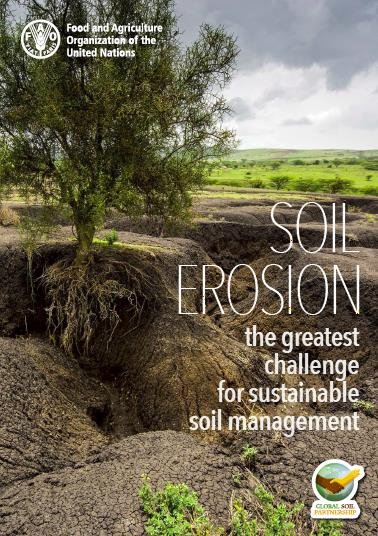- Share this article
- Subscribe to our newsletter
Soil erosion: the greatest challenge for sustainable soil management
The report Soil erosion: the greatest challenge for sustainable soil management was launched by the Food and Agriculture Organization of the United Nations (FAO) at the Global Symposium on Soil Erosion in May 2019.
The 100-page book takes stock of the current state of knowledge regarding soil erosion. It provides an overview on erosional processes and soil erosion control measures. More research has been published on the topic in the past three years than in the entire 20th century.
While knowledge of how soil erosion occurs and how to control it is firmly established, more research is needed on how to measure soil loss rates, and budgets for measures to reduce them remain under debate. Indeed, there is disagreement over whether erosion turns soil into a source or sink for carbon emissions, as well as over rival formulas to assess the relationship between the size of raindrop splashes and the likelihood that they detach soil particles and remove them from the landscape.
We are depleting a non-renewable resource
Still, evidence is clear that soil erosion rates on conventionally ploughed agricultural land or intensively grazed pasturelands are notably greater than erosion under native vegetation and much higher than soil formation rates – implying that we are depleting a non-renewable resource.
Vegetation cover can reduce wind erosion by more than 80 per cent and also enhance water absorption capacity, mitigating soil compaction and impeding the creation of rills and gullies that impede agricultural work. Reduced or no-till practices are also effective, especially in drier regions.
For many farmers, erosion-control measures take a long time to bear fruit. Indeed, terracing, a capital-intensive and highly effective approach practised for thousands of years, is prone to failure today due to poor management and design as well as abandonment, which is widespread in almost all regions where the practice is found.
At the same time, many erosion impacts occur far from the source, as demonstrated by agrochemical runoff that can pollute and eutrophise water sources downstream, which further raises the importance of considering soil erosion control as an issue warranting tangible public support.
Download the report at: http://www.fao.org/3/ca4395en/ca4395en.pdf
(FAO/ile)





Add a comment
Be the First to Comment